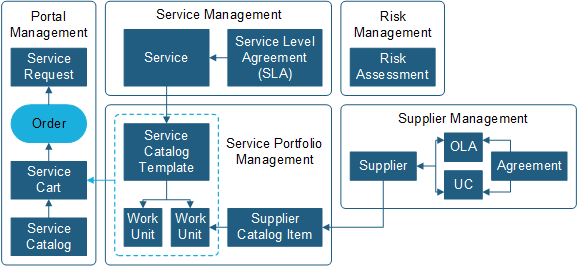The Relationship between CSM and SIAM
Multi-Sourcing Service Integration (MSI) and Service Integration and Management (SIAM) are approaches used to manage the delivery of services using multiple suppliers.
Using these approaches, IT managers can coordinate multiple suppliers (internal and external), available services, and potential risks, while hiding the complexity of the process from customers by providing a streamlined experience.
CSM supports multiple processes related to MSI/SIAM, including:

- Supplier Management
Supplier management is the process responsible for obtaining value for money from suppliers, ensuring that all contracts and agreements with suppliers support the needs of the business, and that all suppliers meet their contractual commitments. Supplier Management allows users to onboard and offboard multiple suppliers (internal and/or external) and manage their individual lifecycles, which includes defining information, creating agreements, and assessing performance. Business Objects that support Supplier Management include Scorecard, Supplier, and Agreement.
- Risk Management
Risk Management identifies, assesses, and controls risks. Risk Management allows organizations to minimize risks associated with suppliers by defining and tracking factors that could affect the delivery of a service. The Business Object that supports Risk Management includes Risk Assessment.
- Service Management
IT service management (ITSM) refers to the implementation and management of quality IT services that meet the needs of the business. ITSM helps you capitalize on the ability of your IT department to provide quality services that are cost-effective and meet the expectations and needs of the business, such as reducing cost of operations, improving service quality, improving user satisfaction, and improving compliance. Business Objects that support Service Management include Service and SLA.
- Service Portfolio Management
Service portfolio management manages the service portfolio and ensures that the service provider has the right mix of services to meet required business outcomes at an appropriate level of investment. Service portfolio management considers services in terms of the business value that they provide. Service Portfolio Management allows organizations to create and manage a comprehensive set of service offerings for customers. Business Objects that support Service Portfolio Management include Service Catalog Template, Supplier Catalog Item, and Work Unit.